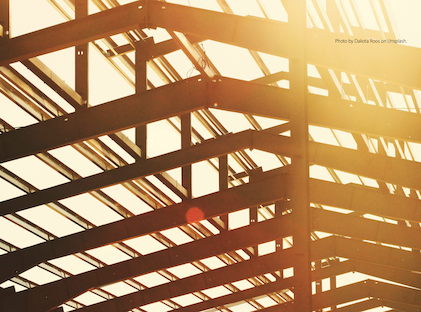Embracing innovation, sustainability and community engagement remains paramount as Texas’s commercial real estate landscape evolves, something. The Beck Group knows well. With a diverse portfolio spanning the United States, Mexico and internationally, Beck continues to redefine industry standards. Matt Leyman, regional director of Beck’s Dallas office, offered his insight into how his firm is addressing client and market demands. Fluctuating interest rates have significantly influenced private- and commercial-sector projects, particularly in office and multifamily spaces. Developers, Leyman said, are being challenged to initiate projects, with pre-leasing becoming a prerequisite for commencement. Uncertainty looms over the office market as organizations reassess workspace needs. Despite a shrinking private market, the public sector remains robust, with project for local entities and data centers driving demand.
“The Beck Group has initiated measures to mitigate this problem by increasing job-site efficiency and productivity, which benefits everyone, including our trade partners,” shared Leyman. “This approach involves integrating deeper into supply chains, creating cost benefits, and improving fabrication/production efficiencies.” Clients, he added, are embracing the design-build delivery method, Beck’s specialty. “Design-Build is the teaming of two separate design and construction firms in a formal agreement or, in our case, contracting with fully integrated firms like Beck,” Leyman explained. For example, Texas Health Huguley commissioned Beck’s design tea to plan and assess a new patient tower for its campus. Then Beck’s construction team successfully completed a six-story patient bed tower featuring a ground floor with a new public lobby and administrative spaces, a women’s services floor and three additional levels that house med/surg units with 36 inpatient beds per floor. Reflecting changes in healthcare standards, the new facility’s rooms are nearly double the size of the original private patient rooms, providing ample space for equipment and visiting family members. Leyman also highlighted surging demand for sustainable building materials, driven by regulatory standards, consumer preferences and environmental consciousness. This shift towards eco-friendly materials aligns with Beck’s green building initiatives and underscores the firm’s commitment to durability and cost-effectiveness. “At Beck, we implement sustainable building materials, evaluate construction activities that reduce emissions and develop corporate strategies that set us apart from our peers in design and construction,” said Leyman. The trend towards adaptive reuse and repurposing of existing buildings also reflects Beck’s commitment to sustainability and urban revitalization. “High-rise towers are becoming a mix of product types with retail, office, multifamily and hotel constructed in a vertically stacked design,” Leyman said. This approach minimizes environmental impact, reduces resource consumption and contributes to neighborhood preservation. “We are developing strategies and workflows to consider the total life span of buildings. A material’s durability, long-term maintenance, future adaptability, eventual building demolition and material recyclability are taking priority,” said Leyman. “Our team is also future-proofing buildings by designing and building with flexible layouts, movable or demountable partitions and prefabricated components. We’re incorporating strategies for technological advancements. We also prioritize energy efficiency and try to understand climate threats better so that buildings can withstand extreme conditions.” At the Old Parkland West Campus in Dallas, Beck’s design and construction teams helped Crow Family Holdings bring its vision of a new headquarters to life by redeveloping the neglected historic hospital into a stunning Class A-plus office campus. Beck is currently working on the West Overlook of Trinity Park Conservancy’s longawaited 250-acre Harold Simmons Park just west of downtown Dallas. The former industrial site had an existing long shed, which was incorporated into the design, along with an event lawn, café, skate and bike park, water features, play cove with a cable ferry, six two story interactive towers and more.
Another trend Leyman has witnessed in commercial property design is an emphasis on wellness and employee well-being. Projects are increasingly focused on providing amenities and experiences akin to luxury hotels, fostering vibrant and inspiring environments. “Live-work-play concepts are dominating the place-making effort. One example is the office environment. Office buildings are shifting to a service- and amenities-focused competition in response to those who generally want to experience vibrant, comfortable, and inspiring environments. Also, developers are repurposing old office spaces into multi-family,” Leyman said. “The new office model is increasingly focused on mixed-use, offering a combination of retail, outdoor space and place-making, hospitality and multi-family.” He pointed out that higher mortgage rates and the rising cost of homeownership are forcing younger generations into the rental market earlier in their careers. Additionally, Leyman added, many younger people working in urban areas are shunning renting in the suburbs, opting to live in amenities-focused apartments closer to work. Meantime, Leyman said technological advancements are reshaping construction methodologies, enhancing efficiency, safety and quality assurance. From sophisticated quantity take-off tools to safety applications utilizing photo recognition, he said the industry is witnessing a paradigm shift and Beck is adapting as needed. “Our team is continually developing and honing in on the most efficient applications,” Leyman said. “There are innovations in on-site or nearsite fabrication technologies. These relatively new applications would benefit prefabrication without the challenges associated with full modular factory prefabrication.” Beck’s imprint on the built environment will be a lasting one, created via a holistic approach to construction that incorporates collaboration, diversity and education initiatives.




